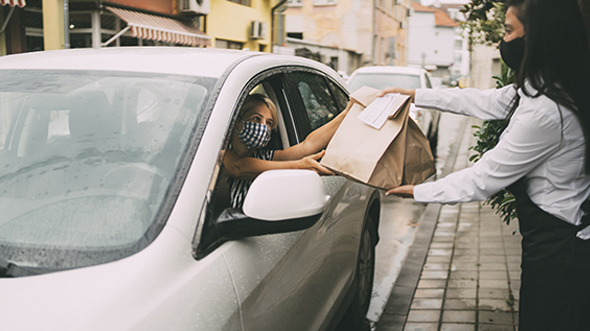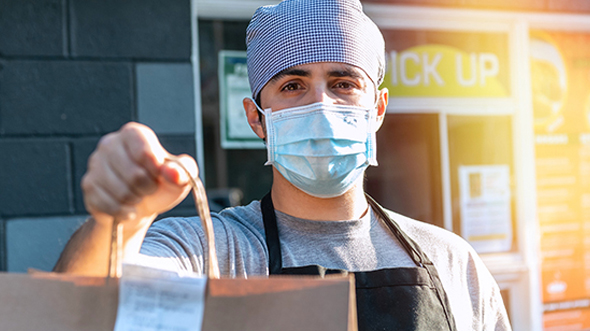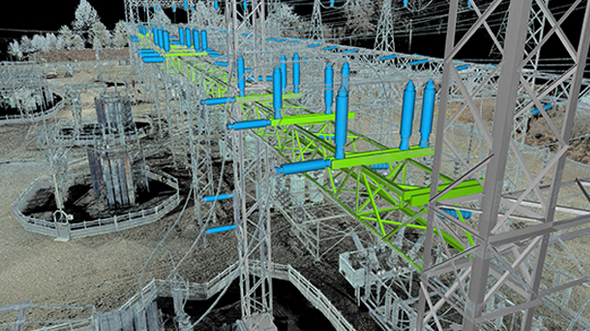
BLOG
—
Long-Term Trends Emerge from COVID-19 Impact on Quick-Service Restaurants, Retail
When the first lockdown orders were issued following COVID-19’s initial spread across the U.S., businesses like restaurants and grocery and convenience stores scrambled to adjust. However, the challenges and decisions these business owners faced and made nine or 10 months ago are different than they are today.
The most successful businesses this year have been the ones that already had online presence, delivery services and multi-lane drive-thrus. Pizza places, for instance, are having record sales this year.
Drive-thrus and Curbside Service
Initially, restaurant owners dedicated more parking spaces to curbside service. Drive-thrus have been stacked more than usual because people don’t want to get out of their cars. With less dine-in activity, restaurants have been relying more on third-party delivery services to stay profitable. As a result, less real estate is needed for customer parking. Some restaurants now have five and six drive-thru lanes and are utilizing pneumatic tubes, like those used at bank drive-thrus, to take payments and deliver food to vehicles.
Restaurants have been enhancing the drive-thru experience to make it more of an amenity. With more people sitting in vehicles waiting for their food, landscape architecture has risen in importance. Restaurant owners are realizing the value of having customers park and wait in a more visually interesting environment, with natural contours as opposed to concrete, a grease trap and dumpsters.
Leveraging Technology
Quick-service restaurant owners also are finding ways to leverage technology to maintain and, in some cases, increase the flow of customers and revenue. Restaurants have been adding mobile apps to help customers review menus, and place and pay for orders online without making a phone call or waiting in line. Mobile devices have been incorporated at some fast food restaurants so employees can input and keep track of orders from customers in the drive-thru line, processing payments and eliminating bottlenecks at the menu board and pay window.
Standing in line may become an annoyance of the past at grocery and convenience stores as well, as stores adapt to the increased demand for remote shopping, catering and delivery. Similar to the Amazon Go model in large cities, some grocery chains are planning to roll out facilities that enable customers walk into a store, login at a kiosk and simply walk out with their groceries. Remote sensing technology would register the items selected and charges the customer’s account as they exit the store without the need to interact with a cashier. These buildings would be half the size of large grocery chains with fewer employees. Other grocery chains are abandoning the brick-and-mortar model altogether by investing in cold storage facilities and establishing delivery services. Customers can go online to order and pay for their goods, which are then delivered to their homes.
A key programming component for these business models is a store’s app. Instead of providing BOGOs or other “free” offers, rewards are being built into the shopping experience based on how often a customer uses the app. This approach can build brand loyalty, enabling customers to accumulate reward points and earn status upgrades similar to Yelp’s Elite member program. Customers sometimes become devoted to a store because they don’t want to lose points or their elevated status.
Ghost Kitchens and Food Deliveries
Food deliveries have increased, even among fine dining establishments, and many popular restaurants are adding ghost kitchens as cost-effective measures. Ghost kitchens are professional food preparation and cooking facilities that do not have customers on-site. Many well-known restaurants are preparing their meals for delivery at these locations. Ghost kitchens sometimes have contracts with multiple restaurants and are in relatively industrial settings, such as warehouses. Some even employ their own drivers for food delivery. The physical location of where a meal is coming from is often not as important to the customer as the convenience provided. But ultimately, we are a food-driven culture. The demand for the dine-in experience may very well return as restrictions are lifted and innovative approaches regain diners.
While COVID-19 has forced many business owners to adapt quickly to stay viable and profitable, many of the changes to the quick-service retail and restaurant industries are likely here to stay. These adjustments have been embraced by the millennial generation, who comprise much of the workforce, and will likely reinforce long-term economic sustainability for these businesses. Millennials have grown up with online banking and mobile apps, and often skip standing in line in favor of ordering online for delivery. As a group, millennials have demonstrated that they value convenience more than cost.
Woolpert is working with these quick-service establishments across the nation to help them navigate the unforeseen circumstances that have come with COVID-19. As we have all learned this year, being able to adjust, innovate and move forward—even in the face of a global pandemic—is the key to survival in the business world.

Jesse Blackstock
Jesse Blackstock, PE, is a program director at Woolpert and is based in Florida. He has extensive experience in retail, mixed-use, and national commercial rollout programs of all sizes and classes.

Mark Mockus
Mark Mockus is a retail design expert and works as a program director out of the firm’s Chicago office. He specializes in designing retail centers, from mixed-use commercial developments and pop-up stores to automobile dealership showrooms and food halls.


